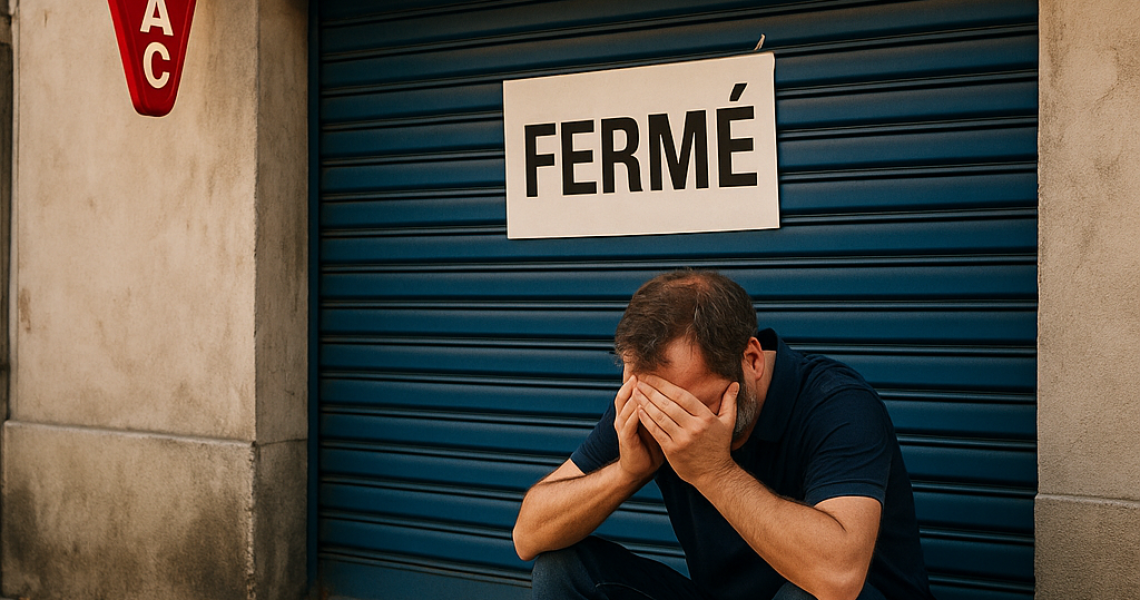It’s a figure that has made Bercy cough.
In 2023, tax revenues from tobacco fell by 4.3 billion euros, a historic decline for a sector long considered a budgetary cash cow.
Behind this figure lies an observation: the French continue to smoke, but they no longer buy their cigarettes in France.
Between cross-border purchases, the explosion of the parallel market and new consumption habits, tobacco taxation is going through a profound crisis.
So, what really happened? And how can we explain this staggering loss for the State?
A price that’s become a deterrent… but not for everyone
For several years now, the French government has been pursuing a deliberate policy of making tobacco a luxury product, by regularly raising taxes.
The stated aim is to reduce the number of smokers, improve public health and offset the costs of smoking-related illnesses.
The result: a pack costing more than 12 euros in some tobacconists, an average of around 11 euros, and a steady stream of increases.
But this strategy ended up having an unexpected effect: instead of giving up smoking, some consumers simply changed their point of purchase.
The call of the stranger: borders become tax loopholes
With prices soaring in France, many smokers are now turning to border countries: Spain, Luxembourg, Belgium, Germany and Italy.
Price differences there are considerable: sometimes up to 4 euros less per pack.
Since 2023, the situation has evolved even further with the new European directive authorizing travelers to bring back up to 4 cartons, or 800 cigarettes, from another member country of the European Union.
A legal decision, but a catastrophic one for the French Treasury: millions of smokers are now legally refueling abroad, sometimes several times a year.
For many, the calculation is easy.
A return trip by car to Spain or Luxembourg saves several hundred euros.
Result: tobacco consumption doesn’t really fall, but tax revenues evaporate.
Tobacconists on the front line
French tobacconists are the first to notice this change.
Sales in France are falling year on year, threatening thousands of local shops.
Some estimate that nearly 30% of the tobacco consumed in France now comes from abroad or from the parallel market.
“Our customers don’t smoke less, they smoke differently”, confides an Alsatian tobacconist.
“Those who have a border less than an hour away no longer buy anything here. We can’t compete with prices in Luxembourg.”
Faced with this situation, the industry is calling for European harmonization of tobacco taxes.
But this prospect remains distant: each country defends its own economic and social interests.

The rise of the electronic cigarette: between economy and illusion
Another striking phenomenon is the rise of vaping.
Many smokers are turning to electronic cigarettes, not to stop smoking, but to spend less.
E-liquids, although taxed, are still much more affordable than a pack of cigarettes.
Vaping is also attracting a younger generation, seduced by the variety of flavors and the promise of a “healthier smoke”.
But in reality, nicotine is still present, and addiction remains.
Some experts even point out that, for many, e-cigarettes become a bridge between two addictions: you leave tobacco behind for another form of habit.
While it may help some people reduce their consumption, e-cigarettes are not a lasting solution for everyone.
Lower cost remains the number one argument, well ahead of health and cessation.
A dependency that moves, not disappears
This situation illustrates a paradox: France has fewer “declared” smokers, but nicotine addiction remainsvery strong.
The need for compensation, relaxation or ritual remains deeply rooted.
And this is where other, gentler, more holistic approaches begin to emerge, notably laserauricular reflexology.

Anti-smoking laser: a gentle method that is becoming increasingly popular
Among the natural alternatives, the anti-smoking laser method is becoming increasingly popular.
Inspired by auricular reflexology, it involves stimulating precise points on the auricle with a low-intensity laser.
This stimulation sends a message to the nervous system, encouraging the release of endorphins and soothing the sensation of craving.
Unlike nicotine substitutes, this method does not introduce any substance into the body.
It acts on the natural regulation of addictions and helps to reduce stress, which is often the cause of relapse.
The sessions, which are quick and painless, are perceived as a holistic support for body and mind, far removed from chemical or punitive solutions.
More and more practitioners are training in this approach, particularly for smoking cessation, but also for other addictions: sugar, alcohol, cannabis or stress management.
It’s a booming method, supported by testimonials from customers who claim to have regained their freedom without pain or frustration.
The role of new practices in public health
As tax policies reach their limits, the anti-smoking laser and natural approaches offer a promising alternative.
They are part of a logic of prevention and health education, where taxation alone is no longer enough.
The state has long relied on price to discourage consumption.
But this strategy has above all encouraged the parallel market and cross-border purchases.
It is becoming urgent to rethink public health policy around tobacco, supporting methods that respect the body and focus on people.
Conclusion: a change of era in the fight against tobacco
The 4.3 billion euros lost by 2023 are not just an accounting problem: they mark a societal turning point.
Smokers are now looking for more economical, more natural and more sustainable solutions.
The tax-based model is showing its limits; the key to success now lies in personalized support, prevention and individual awareness.
Anti-smoking lasers, auricular reflexology and new approaches to well-being embody this new path.
They put people back at the center of the healing process.
And maybe one day, tobacco tax losses will no longer be a signal of economic failure… but a sign that society, too, has learned to breathe differently. 🌿
